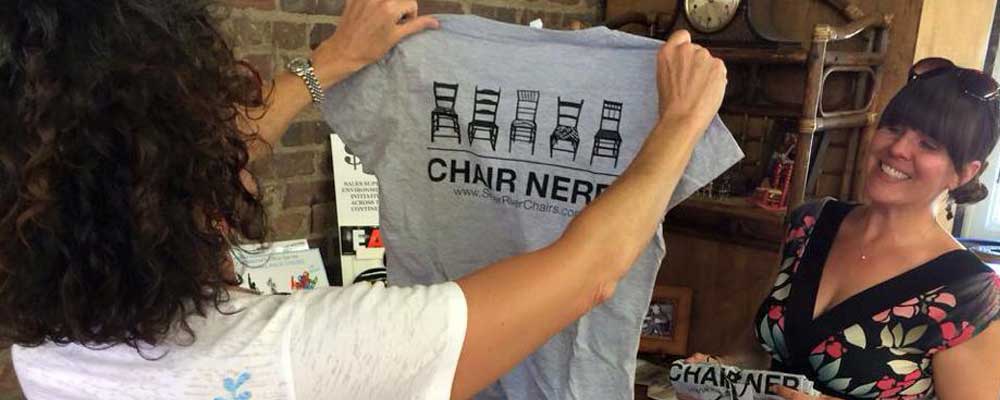Authentic Bark vs. Manufactured Reed for Splint Chairs
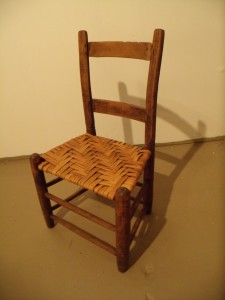
first authentic hickory bark chair!
I admit it was only recently that I wove my first authentic bark seat. I had a helluva time finding it when I first started out. Eventually, I met several chair makers through the Southern Highland Craft Guild and I literally begged them for years to let me come watch/help harvest bark (achcoughJim McGie & Lyle Wheelerachem…hmm. To be fair, if they lived in Asheville I would have just shown up and they’d have been glad for my company).
Eventually I invited myself to watch local chair master Brian Boggs process bark through the Leviathan… A machine that is as freaky as it sounds (see more in a future post) but sped up the cutting and coiling process.
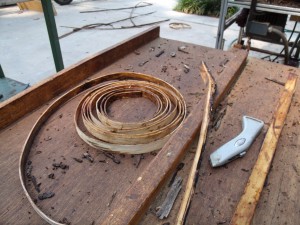
GORGEOUS bark from local sources, where have you been?!
I was able to purchase a couple of coils of mid-grade bark but that was all they had available for amateurs like me. They sat in my studio whilst I slaved away on customers chairs and until I found the perfect practice chair.
And….I…LOVE IT! LOVE LOVE LOVE IT!
Brain Boggs Chairmakers are moving away from the bark splitting part of the business but they recommended a fella over by the Cumberland River near Nashville. Over the holidays Dave and I visited Mark Newberry, a 5th generation chair maker, at his shop in North Central Tennessee. We found our source. What a great person to support, not quite local but down home as they come. We laughed at how chair folks have 2nd jobs to support their chair habit! Reed comes from China and the quality is taking a dive. It is impossible to get this type of connection with China! How can I ever go back to weaving with reed?
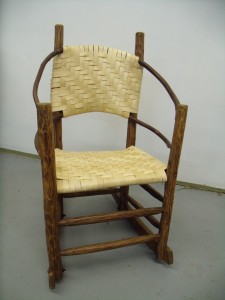
Reed seat & back on Great Grandma’s Chair
Here is the argument for/against reed splints and authentic bark:
Reed is an acceptable option for many chairs. It is the inner core of the rattan palm, the outside of which is stripped to make cane strands. The rattan palm takes a lot less time to grow to harvest than a hickory tree, therefore it saves trees and is a lot less expensive and difficult to work with. As with anything though, less expensive means “comes from China,” so there is overuse of fossil fuels to get the bark to the states. I have also noticed the quality of the material drop in recent years. Basically, reed is widely used amongst chair caners and has been sufficient for beautifully repairing splint seats for decades.
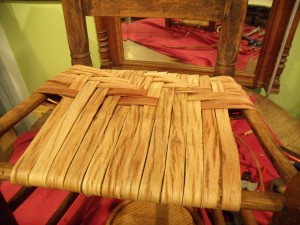
Beautiful grain on authentic bark can not be manufactured by machine
With authentic bark, usually the folks who are cool enough to strip bark after felling a tree are also going to make something out of the rest of the tree. Authentic bark is more difficult to work with than reed but it is stronger and so lovely. There is summer bark and winter bark so you always have a unique seat with flairs only nature can produce. When you purchase bark from local craftsmen, it stays in the southeast and goes to small local business. The amount of fossil fuel used to transport it to Planet Art is exponentially less…plus it is GORGEOUS. Yeah, I’m sold on authentic bark.

HELLO! I am a gorgeous chair seat.
STAY TUNED FOR THE NEXT EPISODES IN THE TAO OF CHAIR:
- Feature on Mark Newberry
- Feature on the Leviathan and Brian Boggs Chairmakers
- Weaving with bark: process and tools
- Before & After Splint Chairs from Silver River Center for Chair Caning

